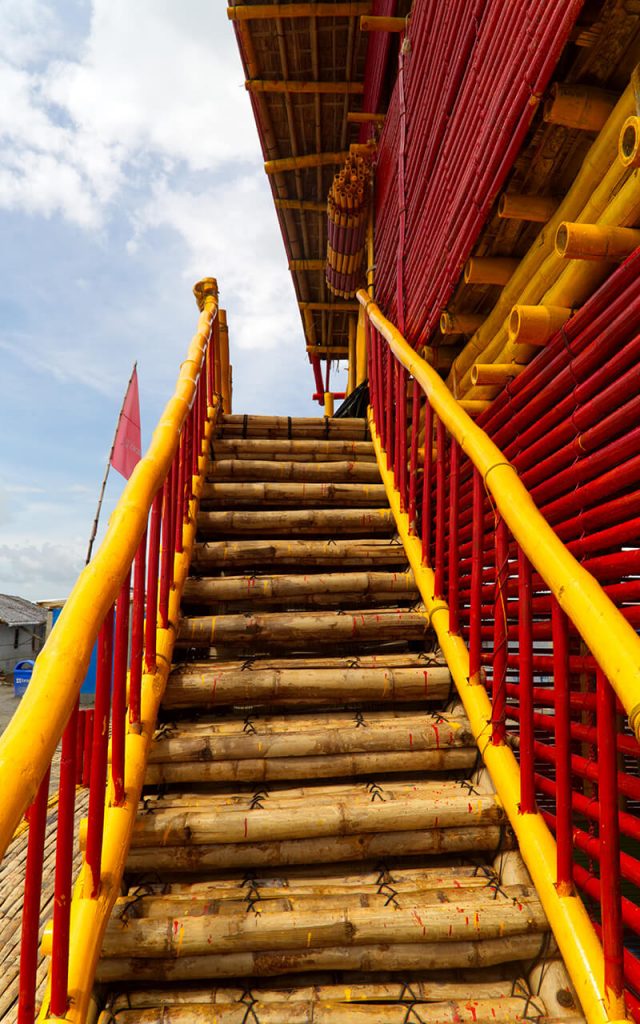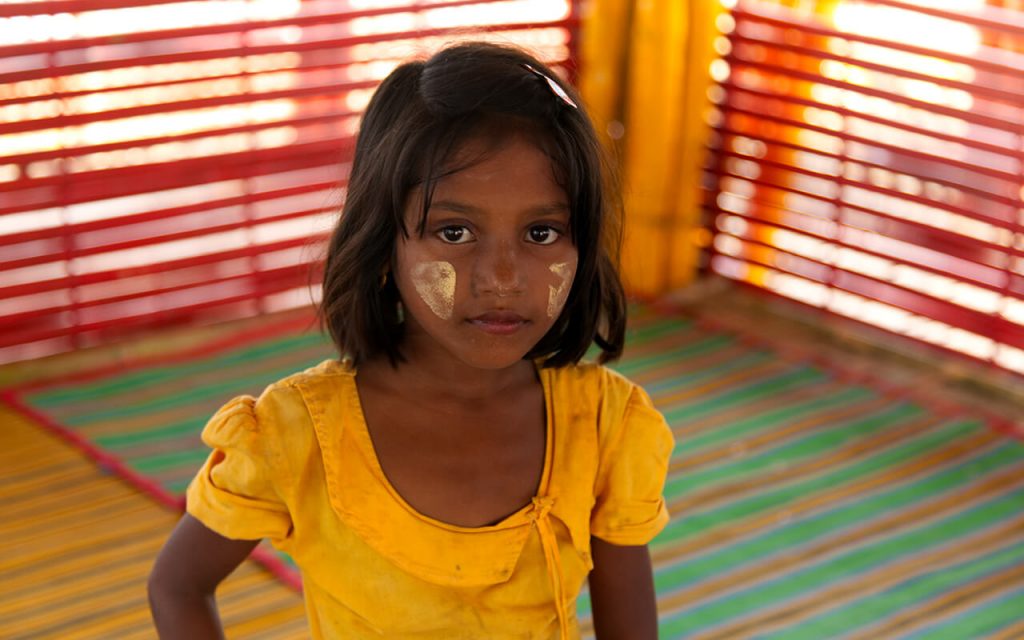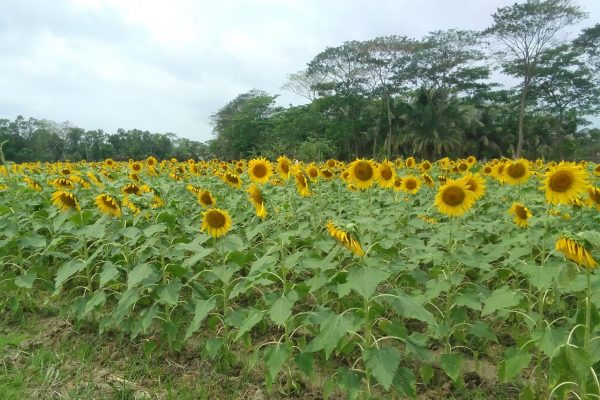Reading Time: 3 minutes
One year on from the latest influx of Rohingyas from Myanmar, the settlements in Cox’s Bazar, Bangladesh are sheltering nearly a million people. 500,000 are children. Our goal for 2019 is to ensure access to education for 100,000 children.
Currently, over 43,000 children are learning in our 496 temporary learning centres in the camps. To reach our goal, we will need to build more learning centres, but there is limited space available in the densely populated settlements.
Building upwards
After a visit to the settlements in February, BRAC University architecture professors worked with our education team on the ground and came up with an idea: a two-storied centre made of bamboo.
We partnered with UNHCR and the final design was approved by the Refugee Relief and Repatriation Commissioner on a pilot basis. The first two-storied temporary learning centre completed construction in September and was inaugurated in October.
The learning centre has a space footprint of just 38’6″ by 25’0″. It stands on 2’0” low stilts which allow the smooth flow of rainwater during monsoon. The structure can be moved if needed.

The new centre accommodates 40 children on each floor. With three shifts each day, it will be able to meet the needs of 240 children – twice the capacity of our other learning centres.
The brightest space in the settlements
The centre offers children a joyful, comfortable environment that encourages learning. Every surface is painted either bright red or bright yellow, including the slanted thatched roof.
Perforations in the front and back walls to allow wind to flow through the centre and it is surrounded by a small garden. Not only does the ventilation ensure that the centre will withstand wind pressure, but it is also a welcome relief from the cramped shelters on the ground. Latrines, clean drinking water and hygiene products are available on site for all.
BRAC’s approach to learning in a humanitarian response
The two stories – both upstairs and downstairs – are already full with excited children.
The centre rings on and off with the sound of singing children all throughout the day and the gentle rustle of paper and pencils.

“I raised my hand in class today,” says eight-year-old Sumaiya*, “My teacher asked me and my friend to come to the front. We recited kabbiya together. The entire class followed us. I did it as loud as I could. It reminds me of home. I could hear the children below singing to a different song. It is never quiet here. Everyone is singing. Everyone is laughing. I love my teachers.”
*names of individuals have been fictionalised

11 year-old Humayun* pulls out his origami camera at the sight of our own photographer. He is one of 43,000 forcibly displaced children from Myanmar registered in BRAC’s temporary learning centres in Cox’s Bazar.
*names of individuals have been fictionalised
Our approach to learning was developed with the Government of Bangladesh, the Rohingya community and a wide range of other stakeholders. We conducted broad surveys of children, and then segregated them based on their estimated age. We partnered with UNICEF and UNHCR to open 496 temporary early learning and non-formal basic education centres where over 43,000 children are currently learning. All the temporary learning centres run six days a week in three shifts focusing on early learning, basic education and life skills. All learners have access to latrines, clean drinking water and hygiene products. Sessions are facilitated by a teacher recruited from the host community and a language instructor from the Rohingya community. We also opened 100 pre-primary and primary schools in the host communities.

The facilities support BRAC and the Government of Bangladesh’s vision; addressing the Rohingya children’s psychosocial needs, providing them with informal and life-skills based learning facilities and ensuring an education which is in line with their culture, ethnicity and language.
Global experience in education
BRAC draws on more than 30 years of experience delivering low-cost, scalable schooling and complementary education services. BRAC pioneered non-formal primary education for children who dropped out of public schools in Bangladesh, then expanded to create a full system of educational opportunities from early education to post-tertiary education, focusing particularly on girls from disadvantaged areas. The BRAC education system is now one of the world’s largest private education systems, and has graduated more than 12 million children in Pakistan, Afghanistan, the Philippines, Uganda, Tanzania, Liberia and South Sudan.
Rashad Wajahat Lateef is a visual storyteller in the communications team of BRAC’s humanitarian crisis management programme.





